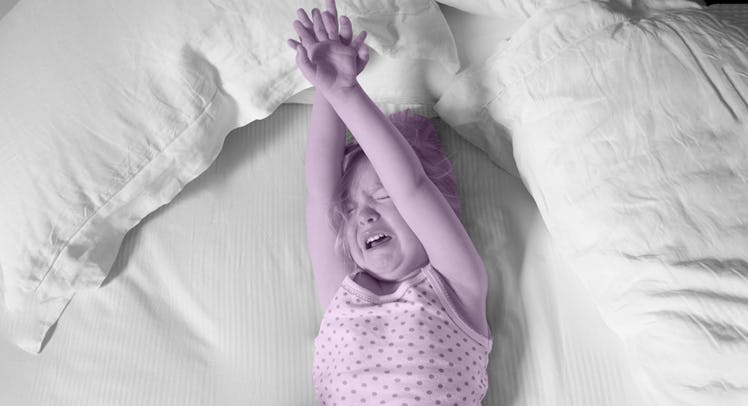How to Sleep Train With the ‘Cry it Out’ Method
The idea of letting a baby “cry it out” can be tormenting, but not for the baby. Parents need to establish healthy sleep habits for their infant.

If parents want a child who can fall back asleep on their own at 3 a.m., they need to teach that kid how to fall asleep at 7 p.m. — or whenever bedtime starts. That’s almost entirely within a parent’s power. Babies generally don’t have any expectations other than what they’ve already experienced so far so setting expectations is really just a matter of repetition, which is the core principle of sleep training. Unfortunately, it’s not quite so simple as rinse and repeat, which is why many parents explicitly employ the “cry it out” method of sleep training. But, before they even get to that step, there’s a bit of prep work to be done.
The first thing parents need to do is establish a healthy bedtime routine. The first month of having a new baby in the house is a transitional period for everyone, but once parents have gotten to know their baby a little bit, they can look for cues that the baby is getting sleepy. The key is to establish a bedtime ritual that helps the kid get to that sleepy phase and then gets them into their bassinet or crib before they fall asleep. That way they grow used to falling asleep on their own instead of in a parent’s arms. If they only ever fall asleep in dad’s arms, they’re going to cry loudly when they wake up randomly in the night and he’s not around.
“Parents always say ‘I just want my baby to be able to sleep through the night’ but it’s important to realize that in reality, nobody sleeps through the night,” explains Elizabeth Murray, M.D., a pediatric emergency physician and spokesperson for the American Academy of Pediatrics. “We all have periods of arousal where we wake up, we just don’t necessarily remember them as adults. But when babies wake up, they need to be able to put themselves back to sleep on their own.”
This is where the idea of “crying it out” comes from – the notion that wakefulness is inevitable and babies should just get used to it. Does this seem cruel? It can. Is it hard to bear as a parent? Frequently, yes. Does that make it an unreasonable strategy? Nope. It can work.
How to Let a Baby Cry it Out
- Prep the baby with a soothing bedtime ritual – stories, lullabies, or cuddles are fine, but the fewer the better.
- Watch for cues that baby is getting sleepy – heavy-lidded eyes, yawns, deep sighs. Letting them cry it out only works if they are actually ready for bed.
- Before the baby falls asleep, transfer them to the crib, and gently say goodnight.
- Be strong and leave them be – surreptitiously checking in to make sure the child is safe is fine, but don’t touch them and don’t pick them up. Otherwise, the whole process will start over.
“There’s been lots of information to show that having the baby cry for a period of time, even if it is a half hour or forty-five minutes, is not going to cause some emotional breakdown between you and your baby,” assures Murray. “It’s going to be fine.”
It’s hard to listen to a sweet, snuggly, drowsy baby descend into cacophonous howls for a half hour, but ultimately it’s worth it. Checking in to make sure a baby is still breathing is fine (also, a natural impulse), but the cost of giving in and rescuing a baby from their own sleep routine can be long term. A baby who realizes that crying long enough brings mom or dad back now has no reason to try to fall asleep. They have every reason to fight it and keep crying until they get the result they want. Babies are — without intending to be — deeply selfish. Give into the selfishness and it will keep up.
“Some kids do grow out it, but the majority of the time, whatever pattern you create, it stays,” explains Murray. “It’s much harder to break bad habits later.”
Here’s the catch: Each baby has their own personality. Some kids simply lack the capacity to self-soothe. Letting them cry it out isn’t going to end well. Kids who need more swaddling, more swaying, and more shushing during the day to remain content are probably not going to be good self-soothers. They may naturally be just a little bit more irritable. Still, the earlier a healthy, simple sleep routine is established, the better the chance that self-soothing works.
“It’s hard to tell what a kid is like from the get-go, so it’s just best to have a healthy routine, as early on as you can,” explains Murray. “Once the baby’s personality emerges, it might be trickier to go back.”
This article was originally published on